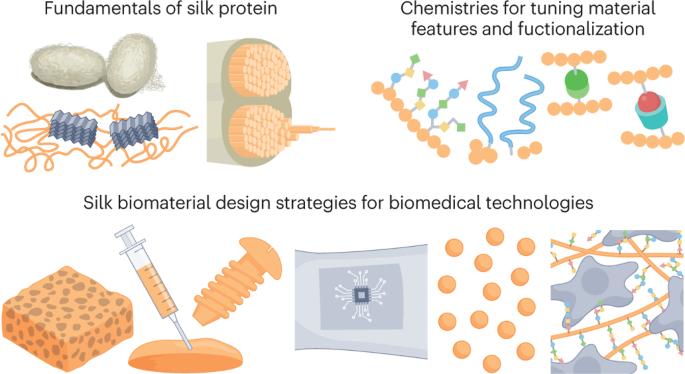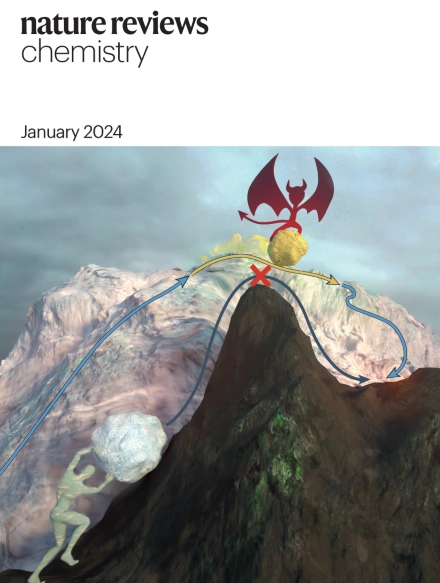Silk chemistry and biomedical material designs
IF 51.7
1区 化学
Q1 CHEMISTRY, MULTIDISCIPLINARY
引用次数: 6
Abstract
Silk fibroin has applications in different medical fields such as tissue engineering, regenerative medicine, drug delivery and medical devices. Advances in silk chemistry and biomaterial designs have yielded exciting tools for generating new silk-based materials and technologies. Selective chemistries can enhance or tune the features of silk, such as mechanics, biodegradability, processability and biological interactions, to address challenges in medically relevant materials (hydrogels, films, sponges and fibres). This Review details the design and utility of silk biomaterials for different applications, with particular focus on chemistry. This Review consists of three segments: silk protein fundamentals, silk chemistries and functionalization mechanisms. This is followed by a description of different crosslinking chemistries facilitating network formation, including the formation of composite biomaterials. Utility in the fields of tissue engineering, drug delivery, 3D printing, cell coatings, microfluidics and biosensors are highlighted. Looking to the future, we discuss silk biomaterial design strategies to continue to improve medical outcomes. Silk chemistries, mechanisms and biomaterial designs are discussed. Utility of chemically modified silk for different biomedical applications such as tissue engineering, adhesives, drug delivery and biosensors, among others, is highlighted. Different design strategies to improve biomedical outcomes are also addressed.

丝绸化学和生物医学材料设计
丝纤维素可应用于不同的医疗领域,如组织工程、再生医学、药物输送和医疗器械。蚕丝化学和生物材料设计方面的进步为开发新的丝基材料和技术提供了令人兴奋的工具。选择性化学可增强或调整丝的特性,如力学、生物降解性、可加工性和生物相互作用,以应对医学相关材料(水凝胶、薄膜、海绵和纤维)的挑战。本综述详细介绍了用于不同应用的蚕丝生物材料的设计和用途,尤其侧重于化学方面。本综述包括三个部分:丝蛋白基础、丝化学和功能化机制。随后介绍了促进网络形成的不同交联化学物质,包括复合生物材料的形成。重点介绍了蚕丝在组织工程、药物输送、3D 打印、细胞涂层、微流体和生物传感器等领域的应用。展望未来,我们将讨论丝绸生物材料的设计策略,以继续改善医疗效果。我们讨论了蚕丝的化学成分、机理和生物材料设计。重点介绍了化学改性蚕丝在组织工程、粘合剂、药物输送和生物传感器等不同生物医学应用中的效用。此外,还讨论了改善生物医学效果的不同设计策略。
本文章由计算机程序翻译,如有差异,请以英文原文为准。
求助全文
约1分钟内获得全文
求助全文
来源期刊

Nature reviews. Chemistry
Chemical Engineering-General Chemical Engineering
CiteScore
52.80
自引率
0.80%
发文量
88
期刊介绍:
Nature Reviews Chemistry is an online-only journal that publishes Reviews, Perspectives, and Comments on various disciplines within chemistry. The Reviews aim to offer balanced and objective analyses of selected topics, providing clear descriptions of relevant scientific literature. The content is designed to be accessible to recent graduates in any chemistry-related discipline while also offering insights for principal investigators and industry-based research scientists. Additionally, Reviews should provide the authors' perspectives on future directions and opinions regarding the major challenges faced by researchers in the field.
 求助内容:
求助内容: 应助结果提醒方式:
应助结果提醒方式:


